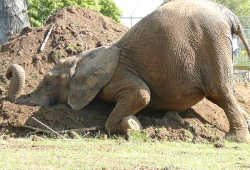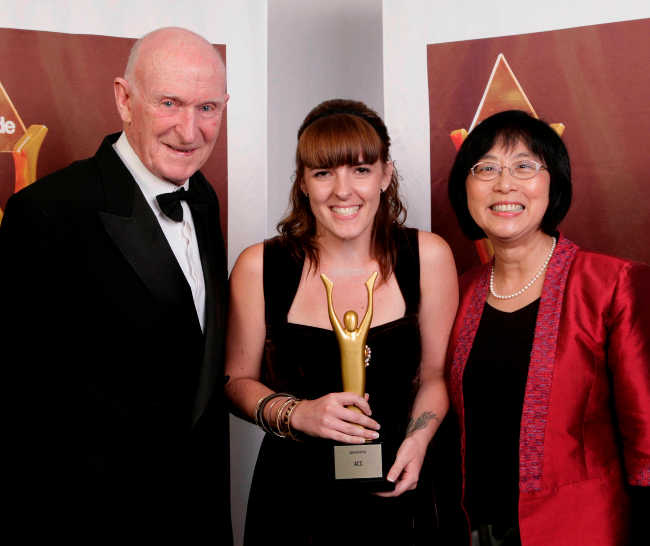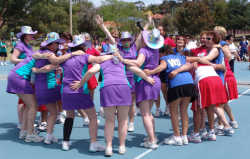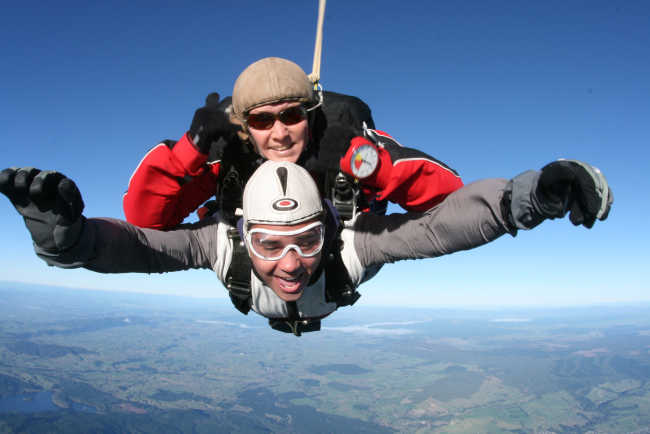– Dorothy – 9-9-05
People working together to make beneficial changes in the lives of small children with disabilities. An Interview with Gae Cherry, an early intervention teacher at the Champion Centre.
What does early intervention mean in this context? Early Intervention means just what the name suggests – intervening early in the life of a baby whose development is compromised. The earlier the intervention the better the outcome is likely to be because the early years of a child’s life are a period of very rapid learning.
What problems cause these children to have developmental problems? Any kind of genetic disorder or chromosome abnormality, such as Down Syndrome, and many others less well known, can be a cause. Damage may have occurred in utero or during birth through asphyxia. After birth normal development can be arrested through injuries from physical abuse, car accidents, or near drowning. Prematurity is another reason for problems, especially when children are out of the uterus three or four months early, which constitutes an assault to the neurological system. Long hospitalisation for medical intervention may well create difficulties with sensory or cognitive development. Some children have disabilities for which the cause is not known.
Programmes to assist disabled children The Champion Centre seeks to assist children with two or more disabilities. Theirs is a holistic programme where the therapists all work together with the parents on the development of the child.
Children with single sensory impairments, such as deafness or blindness or speech and language problems, are usually assisted by the organisations that specialise in these areas, but if these impairments are present as part of multiple disabilities the children enter the Champion Centre and the staff work in conjunction with the other organisations.
Gae’s training for this work Work with deaf children Gae always loved children and from an early age wanted to teach deaf children. After primary teaching training she completed specialised training as a teacher of the deaf. She taught at the School for the Deaf, now van Asch Education Centre, for five years, working with four to six year olds. There was no signing at that time, so her training was as a totally oral teacher of the deaf.
In 1968-9 she was involved in what was a new concept at that time – developing units. This meant preparing groups of children to work in normal schools. An arrangement was made with the Sumner and Redcliffs Schools for some of their pupils to share in classes with the deaf children. They began with art, music, and physical education. Some children were mainstreamed for other subjects. This was an early forerunner of the programmes developed some twenty years later for mainstreaming disabled children.
Training through the Play Centre Movement Gae left this work to have her own children and for eleven years was very involved with the Play Centre Movement, becoming a Parent Educator, a trained Play Centre Supervisor, a trainer of supervisors, and a Resource teacher. The Resource teachers were like trouble shooters who could be called upon to assist with any child who caused difficulties for any reason. This work included the planning of special programmes to help the children over their problems.
Work at the Champion Centre – a Holistic Method This work began with the PhD thesis of Dr Patricia Champion, based on research into whether early educational intervention with children with Down Syndrome would result in outcomes different from those of children not given early intervention. She chose a particular method based on an ecological philosophy where the children with the disability are not seen as separate from their whole lives. Instead of being removed to an educational centre the children are taught with their parents as their educators.
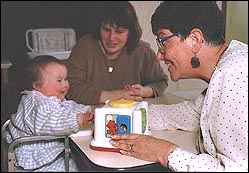 |
| Gae and the parent working with the child |
The parents are trained to be therapists to their own children. Everything that happens in the child’s life in the immediate family and in the extended family impacts on how the child learns.
The three core therapies These are physiotherapy, speech and language therapy and cognitive therapy. In addition there are occupational therapists and music educators in the team. Computer aided learning is also used, and social workers are part of the team. When the children are about three years old they are encouraged to enter their local pre-school facility and the Champion Centre provides educational support workers to work with the children and the staff in the facility.
Dr Susan Foster-Cohen is now director of the programme and keeps up with current research in the area of early intervention world-wide. The programmes are flexible and new ideas are tested and incorporated where appropriate.
The programme in action Every half day clinics are held. Families come in for a half day each week. Six to eight families come into the clinic at a time. Under an open plan system there is interaction between the different families and the therapists. Part of the therapy is making relationships with other parents who are coping with similar problems. They give support and share ideas. The parents sit together and the therapists work with one child and parent each for about twenty minutes.
In the interdisciplinary type of programme the therapists work as a team and consult and monitor each other’s work. For instance Gae as an early intervention teacher may be working with a child with cerebral palsy, using the stacking of blocks, but may not have the child seated in the best position to get the best response. Here the physiotherapist can assist with advice on posture for comfort and easier movement.
Gae may assist the physiotherapist where a child enjoys games which develop cognitive skills, but is resistant to the work of the physiotherapist. By using games Gae can keep the child happy while the physiotherapist tries to get her/him into positions which are not normally liked. The speech and language therapist may assist the other therapists in using suitable language as learning takes place.
Parent-Professional Partnership
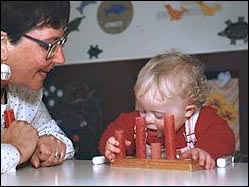 |
| Gae and child working together at the clinic |
At the end of the clinic the parents go home with tasks from each therapist to be done during the week. The therapists as a team discuss the progress and needs of each child and plan the work for the following week.
When the parents return they discuss the week’s activities with the therapists and assess each activity – its success and the level of difficulty.
In this parent-professional partnership the parents are not being told what to do, but all are partners sharing the life of the child to maximise the child’s potential. Teaching the parents about child development and explaining the purpose of the given task is an integral part of the process. A parent who understands the purpose will be creative about the task and may adapt it to suit the child’s particular needs. This type of discovery can be shared in the discussion the following week.
It is not easy to be a parent and a teacher – a fact which is acknowledged all the time by the therapists. Some parents are very successful in the role, some find it difficult at first but improve and become good at it, and others always struggle. The therapists have to be sensitive to the other pressures at home that may be affecting the parent’s attitude to the work as a teacher. The holistic approach applies here too.
Growing numbers A hundred and twenty children are in the programme and there is a growing waiting list. There is also a monitoring programme in which Gae is involved. Under this system there is a four or six monthly check up for children after a period in the clinic, especially those born prematurely, to see if their development is progressing as expected. If the progress has slowed the child is brought back into the clinic.
Mainstreaming – the long term aim of the Centre The aim for the children is to have them ready for mainstreaming by the time that they begin school. The staff of the Centre assist with the transition from the Centre to school, being involved with the school for the first six to eight weeks and providing detailed reports to the school.
The Champion Centre view is that children with disabilities are usually best educated with children without disabilities – that a disability is not a reason to be separated. Children learn by imitation. Mainstreaming benefits everybody. The children without disabilities learn about caring, helping skills and different learning rates. However there are some children who find it too difficult in the mainstream, and for them a special school situation is beneficial.
The importance of support The Champion Centre recognises that for mainstreaming to work the class teacher needs to be well supported and the Centre has been involved in lobbying the government for support funding.
The philosophy of the Centre The Champion Centre aims to make the world a better place for those who come for help. In addition to helping the children the staff aim to empower parents to be advocates for their children. To do this they need help to rise above feelings of helplessness and hopelessness, and to work through the grief issue. Here the Centre plays an important role for parents. Many parents say that having a child with disabilities is certainly a different experience, but it can prove to be very enriching.
People Making Changes Main Page

